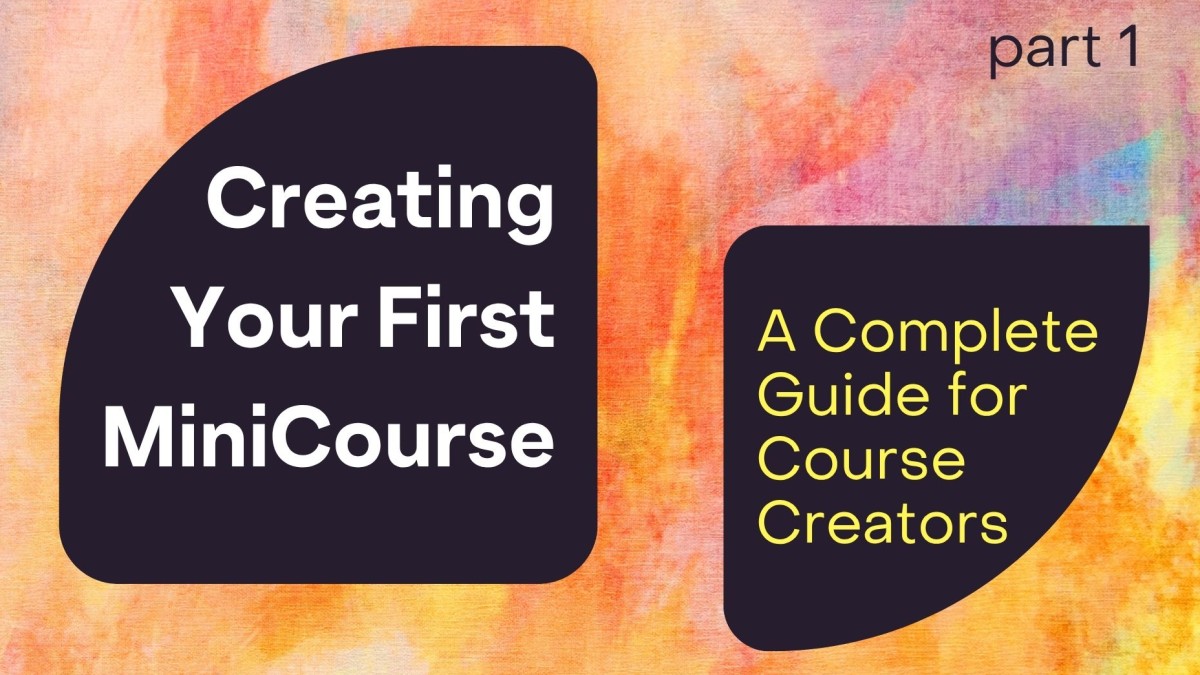Creating Your First Mini Course: A Complete Guide for Course Creators PART 1

Are you ready to transform your expertise into a profitable mini course?
If you've been struggling with where to start or how to structure your content, you're not alone. Many aspiring course creators get overwhelmed by the process, but it doesn't have to be complicated.
What Makes a Great Mini Course?
A mini course is exactly what it sounds like - a focused, bite-sized learning experience that delivers specific value to your audience. The key characteristics of an effective mini course include:
Keep It Focused: Your mini course should cover one specific topic that naturally follows from your lead magnet. If your lead magnet helps people identify their stress triggers, your mini course might teach them practical stress management techniques.
Aim for 3-5 Lessons: This isn't the time to create a comprehensive masterclass. Three to five lessons is the sweet spot - enough to provide real value without overwhelming your students or yourself.
Make It Actionable: Each lesson should have a clear learning objective. Students should walk away knowing exactly what they've learned and how to apply it.
The Content Creation Process
Start with Your Lead Magnet Connection
Your mini course must flow naturally from your lead magnet. This connection is crucial for sales success. As one instructor noted: "If it doesn't connect, it will not work. You're not getting sales because you're talking to audience A about topic B, and they're not getting it."
Plan Your Lessons
Each lesson should focus on one specific learning outcome. The optimal length for video lessons is typically 15-20 minutes, though this can vary based on your subject matter:
- For quick skills: A 5-minute lesson on teaching a dog to sit is perfectly adequate
- For hands-on activities: A 40-minute music lesson where students play along might be necessary
- For theoretical concepts: 15-20 minutes allows for thorough explanation without losing attention
Choose Your Content Format
You have multiple options for delivering your content:
- Video lessons (most popular and effective)
- Audio recordings (great for meditations, coaching, or commuting-friendly content)
- Written materials (workbooks, guides, checklists)
- Mixed media (combining video, audio, and downloadable resources)
Technical Considerations Made Simple
Recording Your Content
You don't need expensive equipment to create quality content:
- Zoom recordings: Set up a personal Zoom session and record yourself. Zoom automatically separates audio and video files.
- Phone recordings: Use your smartphone and transfer files via Google Drive or WhatsApp.
- Simple webcam setup: Your computer's built-in camera can work perfectly fine for getting started.
Editing and Compression
Tools like Canva Pro (around $12/month) can handle basic video editing needs. For file compression, free tools like Handbrake can reduce large video files to manageable sizes for upload.
Keeping File Sizes Manageable
Most platforms have file size limits (typically 2GB). A well-compressed 2-hour HD video should be around 600MB, so plan accordingly.
Pricing Your Mini Course
Mini courses typically fall into the "low-ticket" category, usually priced under $20. This makes them accessible to a wider audience and serves as an excellent introduction to your paid content ecosystem.
The pricing should reflect the focused nature of the content while still providing substantial value. Many successful mini courses in specialized niches (like guided meditations) can command $15-20 for 3-5 short sessions.
Common Pitfalls to Avoid
Overcomplicating Your Content
The biggest mistake new course creators make is trying to cram too much into their mini course. Remember, this is meant to be a quick win for your students and a stepping stone to your higher-priced offerings.
Perfectionism Paralysis
Your first course won't be perfect, and that's okay. You'll learn and improve through student feedback and your own experience. The key is to start with something good enough and refine it over time.
Ignoring the Lead Magnet Connection
Never underestimate the importance of alignment between your free lead magnet and your paid mini course. They should feel like natural progressions of the same journey.
Getting Started: Your Action Plan
- Review your lead magnet - What would be the logical next step for someone who found value in your free content?
- Outline 3-5 lessons - Each should build on the previous one and contribute to an overarching learning objective.
- Choose your format - Video, audio, or written content based on your comfort level and audience preferences.
- Create your content - Focus on delivering value, not perfection.
- Test and refine - Gather feedback and improve future iterations.
The Bottom Line
Creating a mini course doesn't have to be overwhelming. With focused content, clear objectives, and the right tools, you can develop a valuable learning experience that serves your audience and grows your business. Remember, the goal isn't to create the most comprehensive course possible - it's to provide a specific solution that naturally leads students to want more of what you offer.
Start simple, focus on value, and build from there. Your expertise is valuable, and a well-crafted mini course is an excellent way to share it with the world while building a sustainable course creation business.
Categories: : Zenler Events
Copyright © 2025 Zenler. All rights reserved.
Terms | Privacy Policy | Cookie Policy | Support
 David Zenler
David Zenler 
